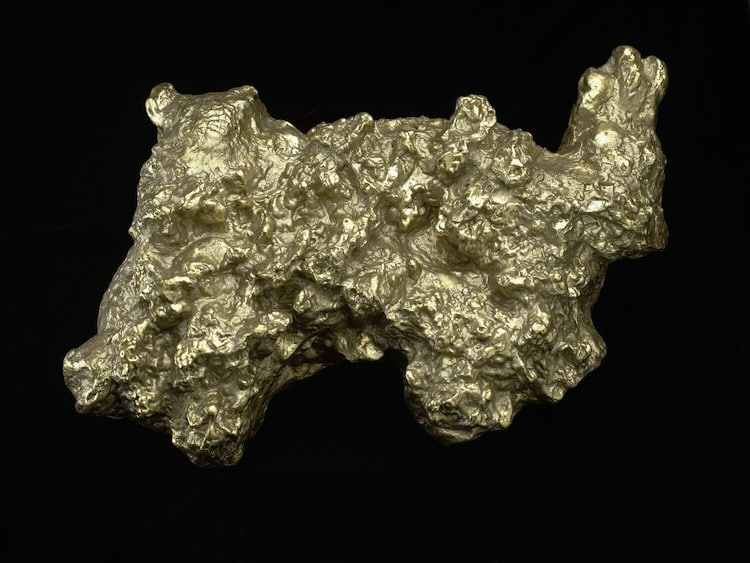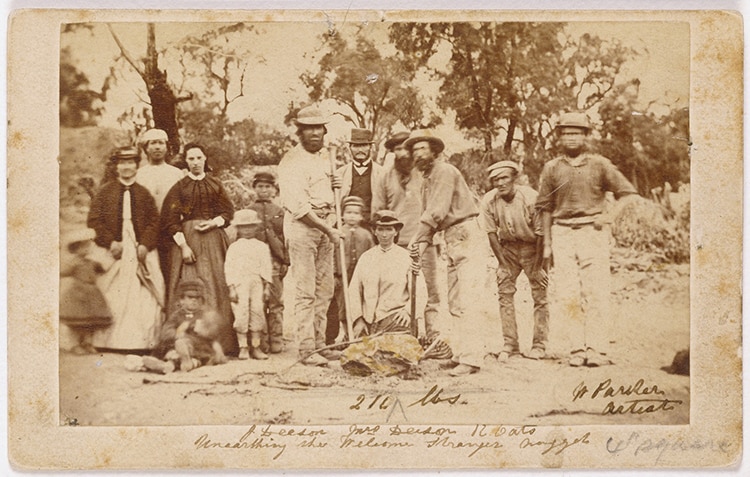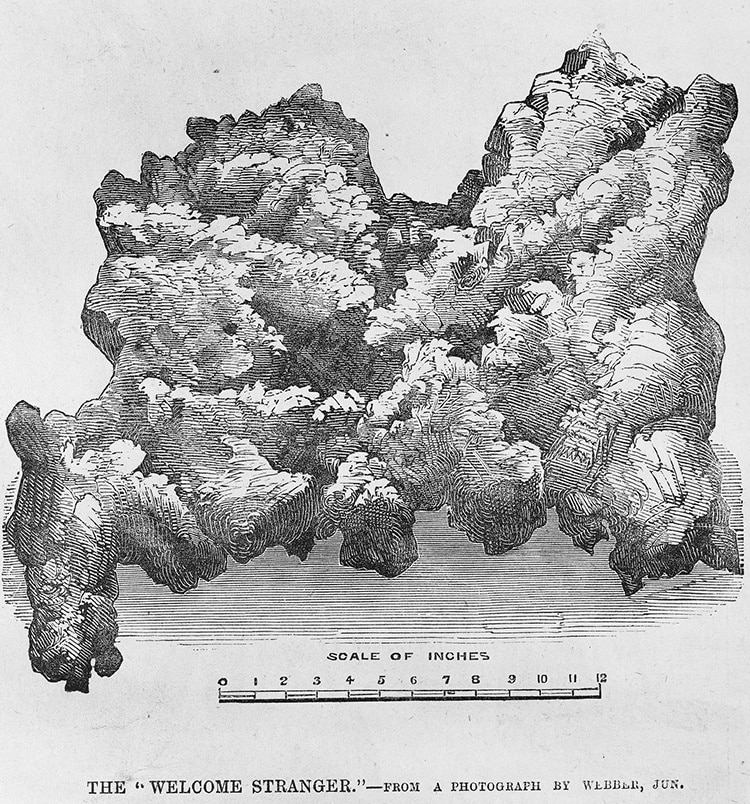Yet in 1851, an Australian Gold Rush that started in New South Wales changed both of their fates.
Hundreds of thousands of prospectors immigrated to the country hoping to be among the lucky ones to discover gold.
Deason left for the Down Under in 1853, and a year later Oates joined him.

Replica of Welcome Stranger Nugget (Photo: Rodney Start /Museums Victoria,CC BY 4.0 DEED)
They attracted a crowd to the London Chartered Bank, requiring a constable to be called.
However, the Welcome Stranger was too big to fit on the banks scale.
Before a photograph could be taken, the nugget was broken apart to be weighed.

Miners and their wives posing with the finders of the nugget, Richard Oates, John Deason, and his wife. (Photo: William Parker viaWikimedia Commons, Public domain)
It took five hours to get small enough pieces.
The Welcome Stranger was larger by 6 pounds, and was purer gold.
That would be equivalent to a little over 1.3 million (roughly $1.64 million) today.

Photo:Wikimedia Commons(Public domain)
However, a similar amount of gold would fetch around 3 million ($3.8 million) today.
In the 1980s, Australia released pure gold bullion coins, with the largest denomination depicting the Welcome Stranger.
Despite no photographs existing, several replicas have been made.
In 2019, the prospectors' descendants gathered to celebrate the 150th anniversary of the precious discovery.
Even today, tourists looking for adventure can head to Victoria to dig for gold.
The largest fully intact nugget still in existence is the Pepita Canaa, weighing 134 pounds.
Julio de Deus Filho found the piece in Brazil in 1983.
The Museu de Valores do Banco Central do Brasil has it on display.
At only 60 pounds, though, it is just over a third of Oates and Deasons mammoth.